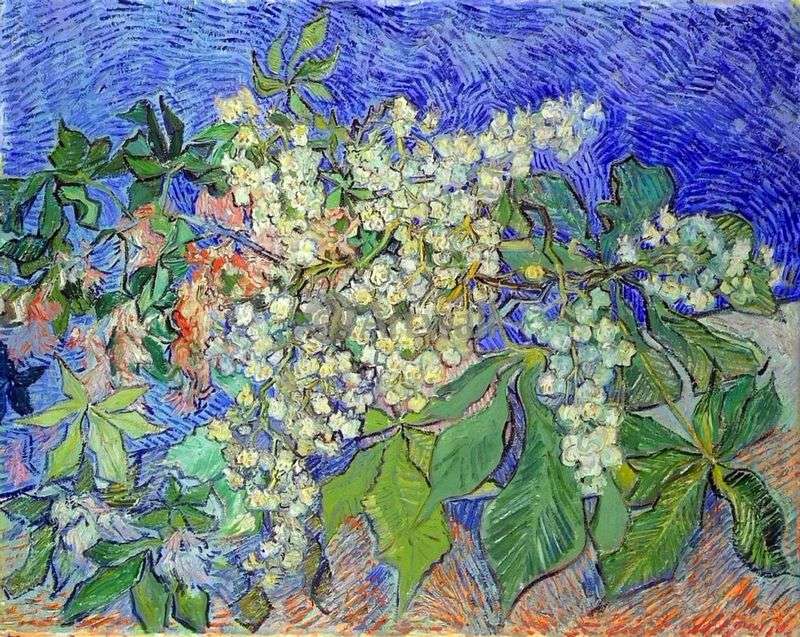
Flowering branches symbolize the rebirth of nature, or hope and redemption in a broader sense.
Also in a similar sense, Van Gogh used this motif, referring to the events of his life. On May 16, 1890, by his own will, he left his haven and St. Remy. Upon arrival in Auvers-sur-Oise, near Paris, the artist met lush vegetation. The beginning of spring he spent in the south, in Provence, but the north unexpectedly surprised him the second spring, an inspiring effect that can be seen in his choice of the plot.
In Over Van Gogh painted old chestnut trees in the street with white and pink flowers, whose petals are about to fall, while in the picture the flowering branches of a chestnut painted in the form of a still-life, in a jar along with rhododendrons. As in the works of Van Gogh similar subjects, the unconventional pruning of the picture and the asymmetry of the composition reflect the influence of Japanese engraving.
 Flowering almond branches by Vincent Van Gogh
Flowering almond branches by Vincent Van Gogh View of Arles among flowering trees by Vincent Van Gogh
View of Arles among flowering trees by Vincent Van Gogh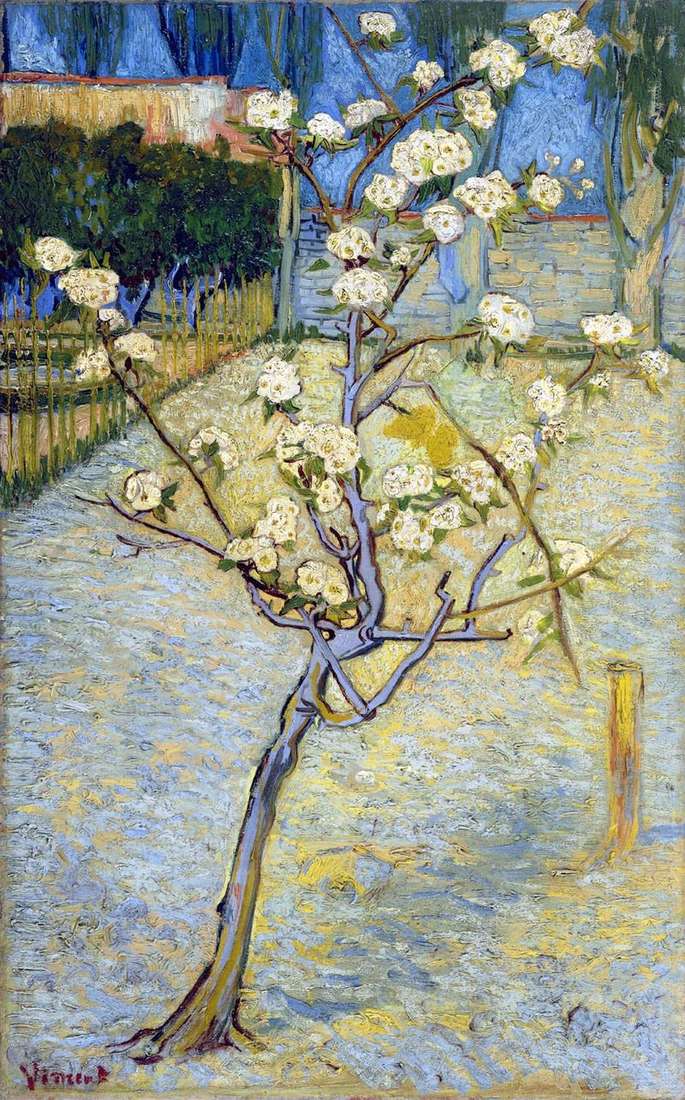 Flowering pear by Vincent Van Gogh
Flowering pear by Vincent Van Gogh Orchard with flowering apricots by Vincent Van Gogh
Orchard with flowering apricots by Vincent Van Gogh Flowering peach trees by Vincent Van Gogh
Flowering peach trees by Vincent Van Gogh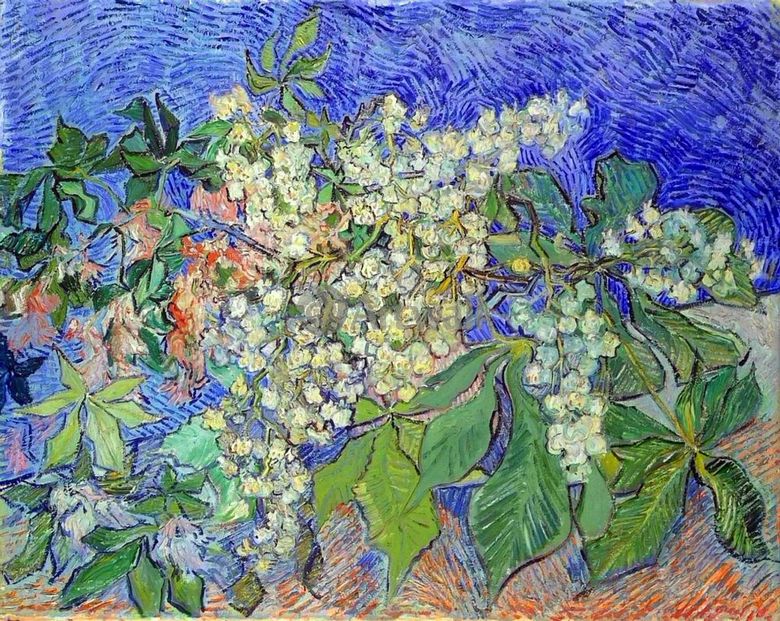 Branches de châtaignier en fleurs – Vincent Van Gogh
Branches de châtaignier en fleurs – Vincent Van Gogh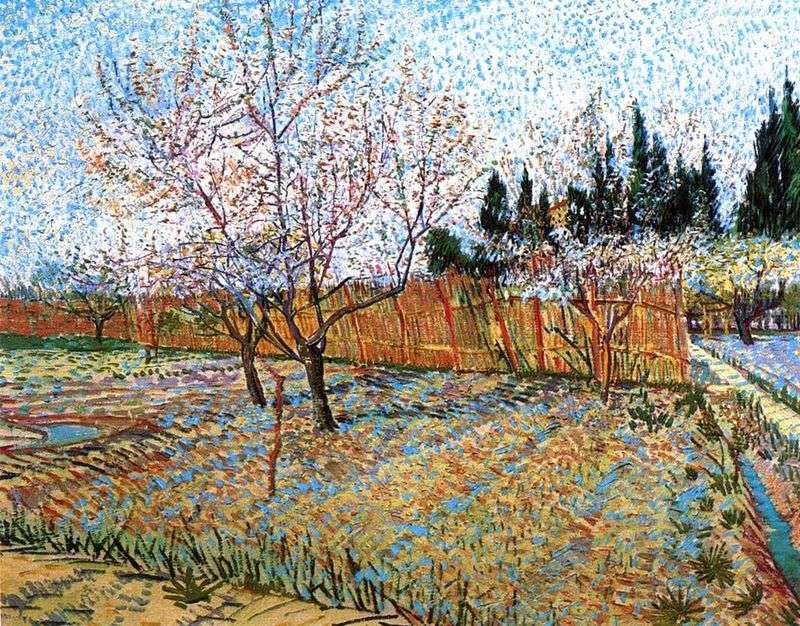 Orchard with flowering peaches by Vincent Van Gogh
Orchard with flowering peaches by Vincent Van Gogh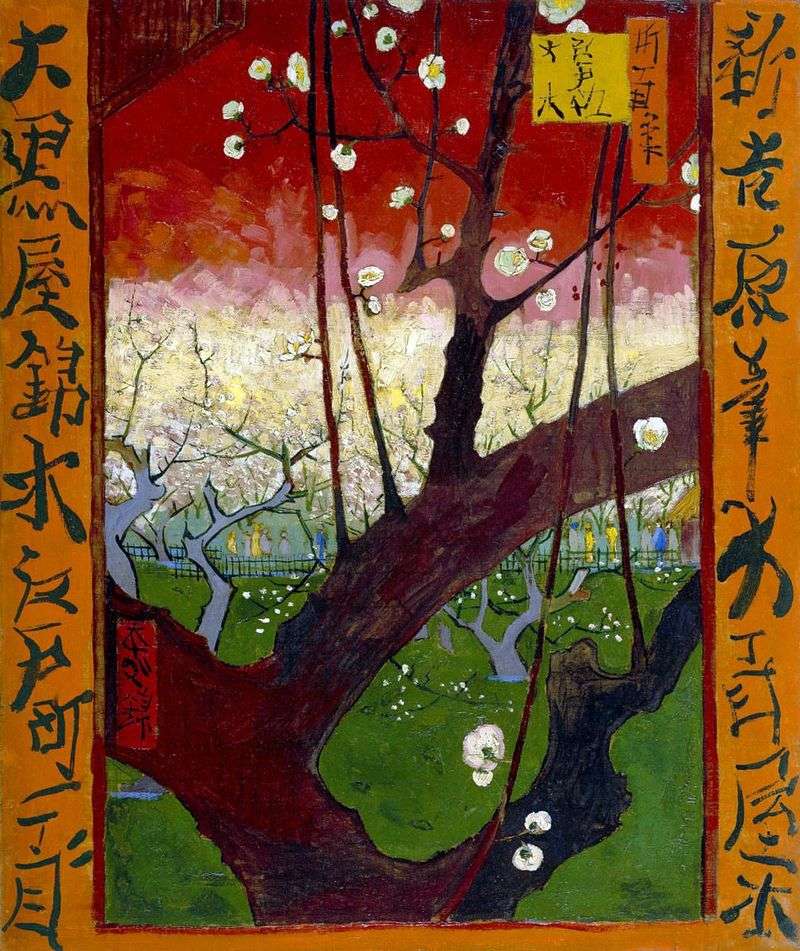 Flowering plum by Vincent Van Gogh
Flowering plum by Vincent Van Gogh